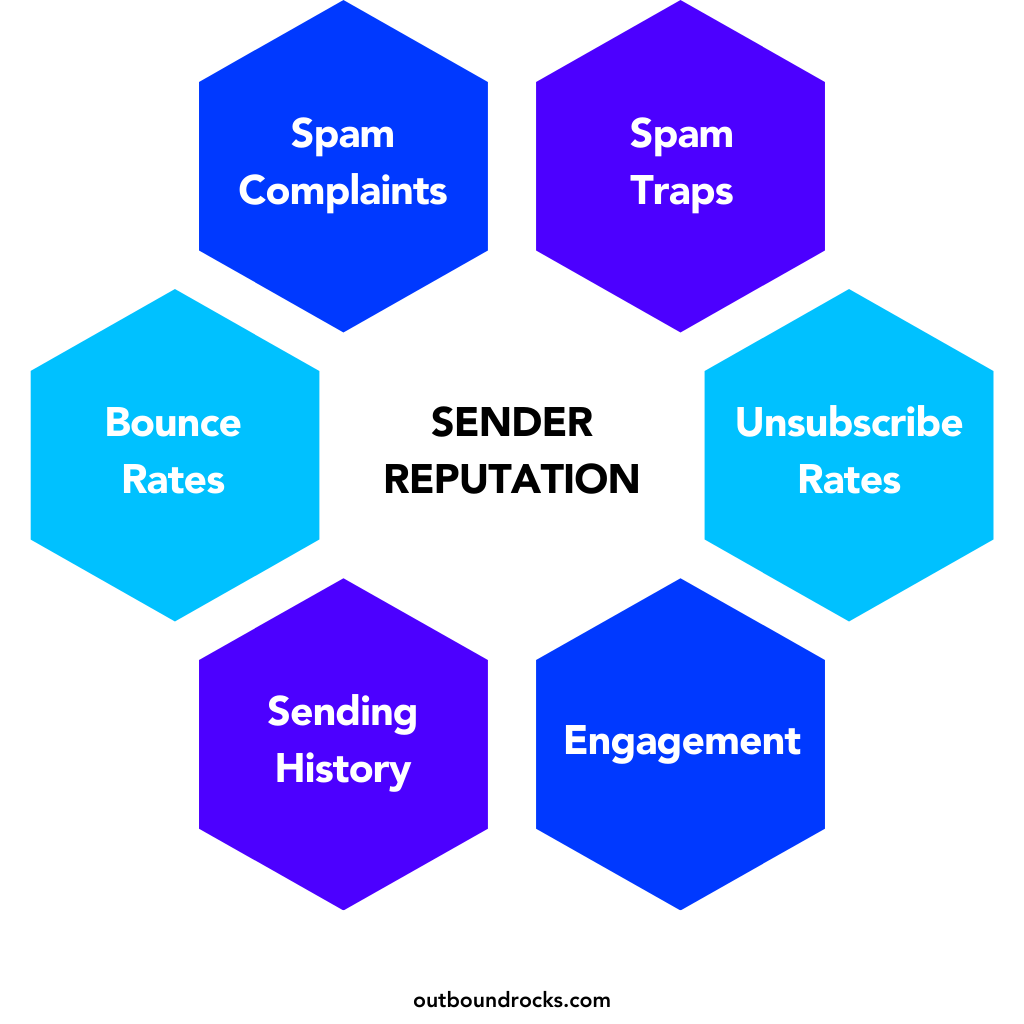Have you ever wondered why some emails magically land in your inbox while others are relegated to the dreaded spam folder? The answer lies in a hidden world of reputations and scores, where your email sender wears an invisible badge called a Sender Score.
This score, like a digital bouncer, scrutinizes your message and decides whether it enters the VIP section of the inbox or is tossed into the wasteland of the junk folder.
In this article, we explore the fascinating realm of Sender Score, dissecting its secrets, its importance, and the power it holds over the fate of your email.
Get ready to learn how to boost your score, befriend the spam filters, and finally conquer the inbox!
TABLE OF CONTENTS
– What is Sender Score?
– Why is Sender Score important?
– Key Factors Affecting Sender Score
– How to improve your Sender Score
– Conclusions
What is Sender Score?
It is a rating system that can range from 0 to 100 and helps measure the reputation of an email sender. Internet Service Providers (ISPs) and email clients use it to decide whether your email deserves the coveted inbox or the dreaded spam folder.
A high sender score indicates that the sender is reputable and their emails are likely to be delivered to the recipient’s inbox, while a low sender score can result in the email being sent to the spam folder or rejected altogether.
This metric is based on several factors, including the sender’s IP address, domain name, and email content. ISPs and email clients use algorithms to analyze these factors and assign a sender score.
Why is Sender Score important?
The importance boils down to one crucial fact: it’s the gateway to inboxes. Here’s why it matters:
✅Increased email deliverability
High punctuation helps ensure that your emails are delivered to recipients’ inboxes. This is important because if your emails are not delivered, they are not seen by the recipient and cannot contribute to conversions or sales.
✅Higher open rates
Mailbox providers trust your sending practices, ensuring that your emails bypass spam filters and land directly in the inboxes of your recipients. No more wondering if your messages have disappeared into the digital void – they’re front and center, waiting to be opened.
✅Better engagement
A high Sender Score acts like a letter of recommendation from email providers, telling recipients that you’re a reliable, reputable sender. This builds trust and opens their minds to engaging with your content.
✅Improved brand reputation
A high punctuation score can contribute to a positive reputation for your brand. This can lead to increased trust in your brand and, ultimately, increased conversions and sales.
In conclusion, sender score is not just a number; it’s a key metric for email success.
Key Factors Affecting Sender Score
Here are some key metrics that impact your email reputation:
1. Spam Complaints
A single click – “Report as Spam” – can unleash a storm. The more recipients wield this weapon against your emails, the deeper your reputation sinks into spammy quicksand. Treat every click with the seriousness it deserves.
2. Spam Traps
ISP-planted spam traps act like undercover agents, silently catching spammers. An errant email lands in one of these, and bam! your name is splattered across public blacklists – a badge of infamy no marketer wants.
3. Bounce Rates
Imagine throwing a party, but most invitations bounce back unopened. That’s what happens with email bounces. Whether it is temporary email glitches (soft bounces) or non-existent addresses (hard bounces), every bounce chips away at your reputation.
4. Sending History
Spam filters are history buffs, scrutinizing your past sending habits. High volumes and spam-like frequency set off alarm bells. Remember, slow and steady wins the inbox race.
5. Engagement
Open rates, clicks and replies are the applause meter of your email performance. The more engaged your audience, the sweeter the music to spam filters’ ears. Create content that engages, not repels.
6. Unsubscribe Rates
A growing chorus of unsubscribes is a sure sign that your emails are missing the mark. Analyze these unsubscribes – were your messages irrelevant? Too frequent? Pay attention to these metrics and review your email frequency to determine if you should increase or decrease it.

How to improve your Sender Score
Improving your Sender Score involves following several best practices to improve your email deliverability and sender reputation.
- First, choose a reputable email service provider (ESP) to ensure that your emails are being sent from a trusted source.
- Second, implementing Sender Policy Framework (SPF), DomainKeys Identified Mail (DKIM), and Domain-based Message Authentication, Reporting, and Conformance (DMARC) protocols is critical. These authentication methods help verify the legitimacy of your emails and reduce the likelihood of them being marked as spam.
In Adition:
- Cleanse your email list regularly to remove inactive or invalid addresses, as sending emails to unengaged recipients can negatively impact your sender score.
- Consistently provide valuable and relevant content in your emails to keep recipients engaged and minimize the likelihood of your messages being marked as spam
Finally:
- Monitor your email analytics and address any issues promptly to maintain a positive sender reputation.
Conclusions
By following these tips and focusing on responsible email practices, you’ll pave the way for better deliverability, higher engagement, and ultimately, email marketing success.
Want to make sure you optimize your sender score for your Outbound Strategy? Check out outboundrocks.com to learn more!
